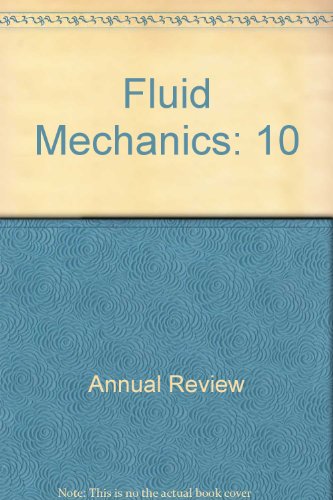湍流旋转Rayleigh–Bénard对流
IF 30.2
1区 工程技术
Q1 MECHANICS
引用次数: 23
摘要
具有热致浮力的旋转控制着大气、海洋、太阳和地球液态金属外核中的许多天体物理和地球物理过程。旋转Rayleigh–Bénard对流(RRBC)是一种具有旋转和浮力特征的实验系统,其中高度为H、底部和顶部温差为Δ的容器绕其垂直轴以角速度Ω旋转。浮力强度反映在瑞利数(~H 3Δ)和Ekman和Rossby数中的科里奥利力(~Ω−1)。旋转抑制了对流的爆发,引入了不稳定性,改变了速度边界层,改变了从羽流到旋涡柱的热结构的形状,影响了大规模环流,并可以根据浮力和科里奥利力减少或增强全球热传输。RRBC是一个极其丰富的系统,其特征与地球物理和天体物理现象直接相当。在这里,我们回顾了RRBC的研究,提出了一种统一的热传输标度方法,用于RRBC中旋转主导和浮力主导状态之间的转换,并讨论了非Oberbeck–Boussinesq和离心效应。《流体力学年度评论》第55卷预计最终在线出版日期为2023年1月。请参阅http://www.annualreviews.org/page/journal/pubdates用于修订估算。本文章由计算机程序翻译,如有差异,请以英文原文为准。
Turbulent Rotating Rayleigh–Bénard Convection
Rotation with thermally induced buoyancy governs many astrophysical and geophysical processes in the atmosphere, ocean, sun, and Earth's liquid-metal outer core. Rotating Rayleigh–Bénard convection (RRBC) is an experimental system that has features of rotation and buoyancy, where a container of height H and temperature difference Δ between its bottom and top is rotated about its vertical axis with angular velocity Ω. The strength of buoyancy is reflected in the Rayleigh number (∼ H 3Δ) and that of the Coriolis force in the Ekman and Rossby numbers (∼Ω−1). Rotation suppresses the convective onset, introduces instabilities, changes the velocity boundary layers, modifies the shape of thermal structures from plumes to vortical columns, affects the large-scale circulation, and can decrease or enhance global heat transport depending on buoyant and Coriolis forcing. RRBC is an extremely rich system, with features directly comparable to geophysical and astrophysical phenomena. Here we review RRBC studies, suggest a unifying heat transport scaling approach for the transition between rotation-dominated and buoyancy-dominated regimes in RRBC, and discuss non-Oberbeck–Boussinesq and centrifugal effects. Expected final online publication date for the Annual Review of Fluid Mechanics, Volume 55 is January 2023. Please see http://www.annualreviews.org/page/journal/pubdates for revised estimates.
求助全文
通过发布文献求助,成功后即可免费获取论文全文。
去求助
来源期刊
CiteScore
54.00
自引率
0.40%
发文量
43
期刊介绍:
The Annual Review of Fluid Mechanics is a longstanding publication dating back to 1969 that explores noteworthy advancements in the field of fluid mechanics. Its comprehensive coverage includes various topics such as the historical and foundational aspects of fluid mechanics, non-newtonian fluids and rheology, both incompressible and compressible fluids, plasma flow, flow stability, multi-phase flows, heat and species transport, fluid flow control, combustion, turbulence, shock waves, and explosions.
Recently, an important development has occurred for this journal. It has transitioned from a gated access model to an open access platform through Annual Reviews' innovative Subscribe to Open program. Consequently, all articles published in the current volume are now freely accessible to the public under a Creative Commons Attribution (CC BY) license.
This new approach not only ensures broader dissemination of research in fluid mechanics but also fosters a more inclusive and collaborative scientific community.

 求助内容:
求助内容: 应助结果提醒方式:
应助结果提醒方式:


